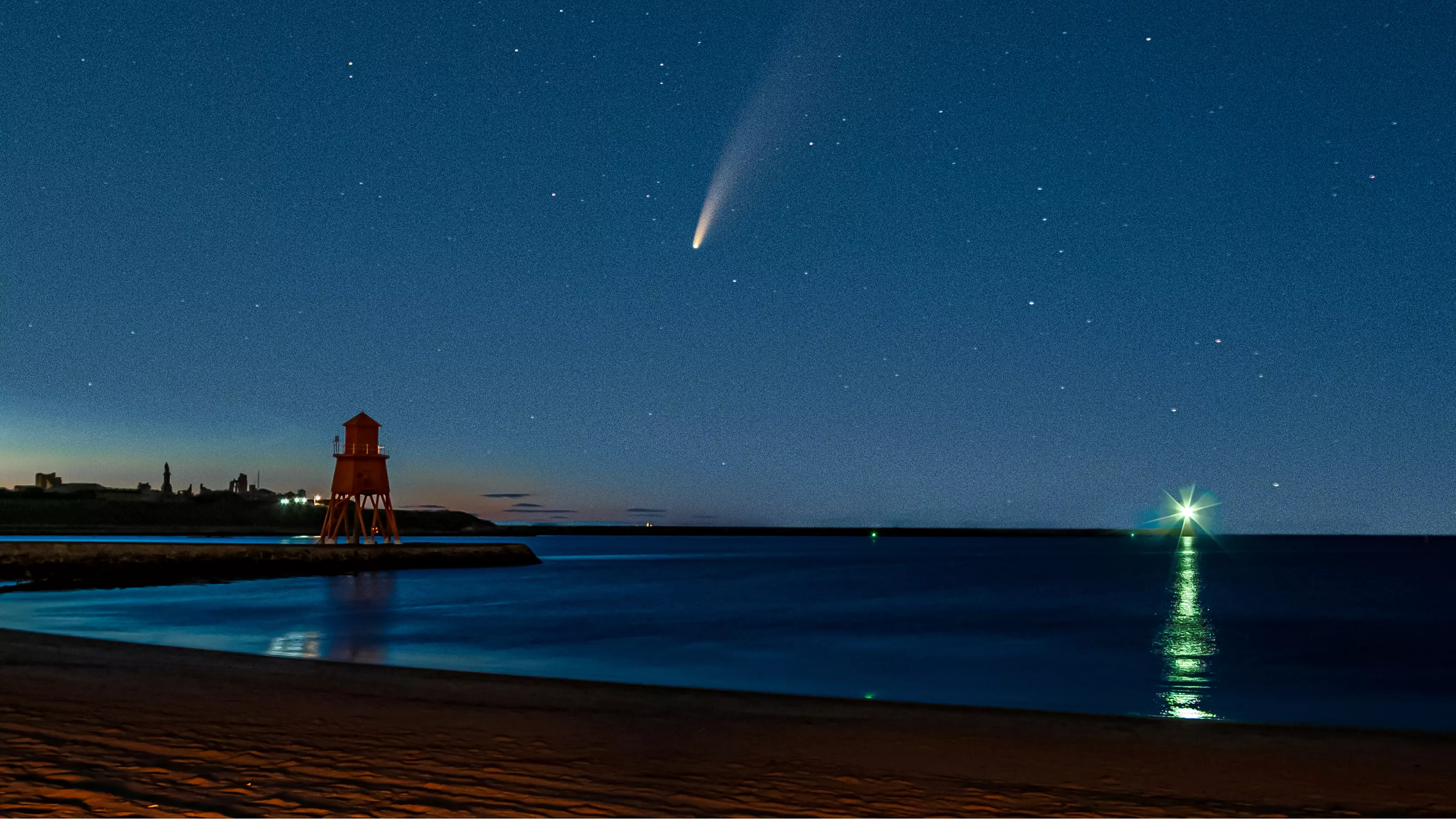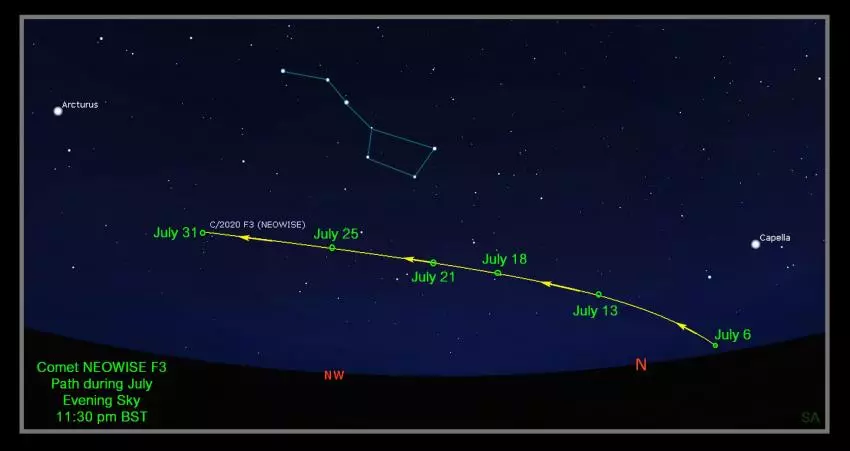
Star gazers are in for a treat this month, as a comet that won't reappear for 6,800 years will be visible in UK skies.
Comet Neowise will cross the northern skies in July, and some sky watchers in the Northern Hemisphere have already been able to catch a glimpse of the stunning spectacle.
The comet last entered the inner solar system around 4,500 years ago and won't be back for another 68 centuries - so don't miss your chance to witness the rare sight!
Comets are mountain-sized forms made up of dust, ice and rock. As they orbit closer to the sun, they heat up and release gases, which form a visible tail that stretches millions of miles.
Advert
According to the Royal Astronomical Society, Comet Neowise was first visible in mid-northern latitudes in the morning sky during first half of July, appearing below the bright star Capella.
Now, Comet Neowise is approaching the seven stars of the Big Dipper and will pass below them, becoming "more obvious in the evening sky" until the end of the month.
If you're going to try to spot the comet tonight, look out for it at around 2.30am in the north-east skies, just above the horizon.
It may well be visible to the naked eye, but a pair of binoculars or telescope will provide a clearer and more detailed view.

When it comes to spotting the comet, the Royal Astronomical Society advise: "To find the comet, make sure you have a clear northern horizon unobstructed by tall buildings, and ideally away from major sources of light pollution.
Advert
"If you have them, use a pair of binoculars to look for the bright haze of the comet, and the fainter tails.
"There are reports of people being able to see it with the naked eye under good conditions, but some optical aid will always improve the view."
To spot the comet from different dates from UK latitudes, you can use the RAS' finder chart position below:

Writing for EarthSky.org, astronomer Eddie Irizarry noted: "The good news is that - if the comet continues looking great - the view during the night of closest approach should be nice for many of us at temperate latitudes in the Northern Hemisphere.
Advert
"Although binoculars are required for the celestial visitor, it will be visible at the same time we see a beautiful Crescent (not too bright) Moon."
Happy gazing, earthlings.
Featured Image Credit: SWNS